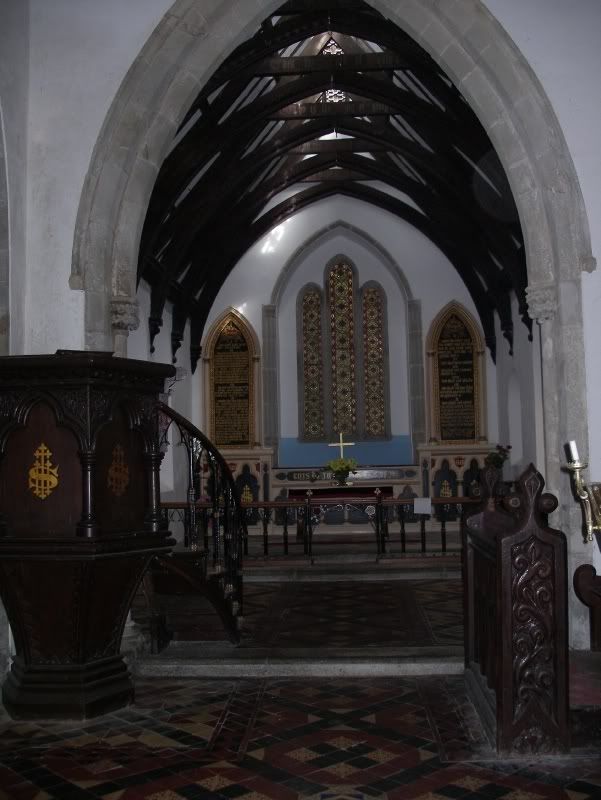St Anthony-in-Roseland:
St Anthony’s stands behind Place, the home of the Spry family, looking across the creek to St Mawes. The church is unusual in that it still has its original mediaeval cruciform plan, despite being extensively restored in the 19th century. Pevsner thought it ‘the best example in the county of what a parish church was like in the 12th and 13th centuries’.
During the 12th century, much of the land at St Anthony was owned by the Augustinian Priory at Plympton, Devon, and it was during this time that the Prior established the church here. It is thought that the fine Norman doorway was brought here from Plympton Priory, probably by sea.

You go in the Norman door. ..
By the 19th century the chancel was in ruins, and Samuel Spry, MP for Bodmin, employed his cousin, the Revd Clement Carlyon, an amateur architect, to oversee the restoration of the church. Carlyon rebuilt the chancel, and installed the wooden roofs, floor tiles and stained glass. He also designed many of the furnishings, including the chunky pulpit and pews, some of which he may have carved himself.

Look out for what appears to be carved woodwork at the top of the walls. In fact it is tin, stained to resemble wood – a fine example of Victorian ingenuity.
In the north transept you can see impressive monuments to members of the Spry family, spanning three centuries. The most noteworthy is to Rear-Admiral Sir Richard Spry who died in 1775.
* ~ * ~ *
Got the Google thing to send me a photo of the placemark.

In the extreme lower left corner, you can see St. Anthony Lighthouse,
which looks much better close up.

Between the church and the coast the first little blue cross marks the beginning of the path to St. Anthony's Head, the same path H.V. Morton must have taken to see the "tiny bay, nestling between two gaunt cliffs."

I imagine the area leading up to the church must be where the little cottages are where he stayed.



No comments:
Post a Comment